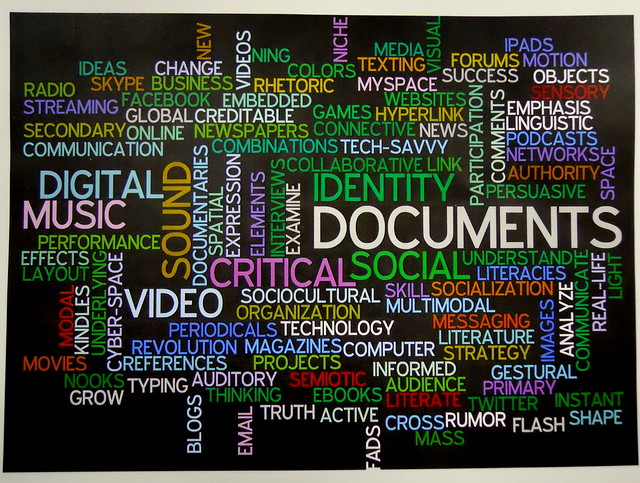I chose this image because I found it an interesting reflection of the many aspects and skills involved in literacy and indicative of what being fully literate means in today’s technological world. Some of the terms, such as “documents”, “magazines”, and “newspapers” represent a more traditional literacy with content produced using previous text technology like the typewriter and printing press. This type of text enables shared information, but affords readers no opportunity to manipulate or comment on the content. Other terms, like “digital”, “social”, “multi-modal”, and “blogs”, illustrate how literacy has dramatically changed and expanded in recent decades and how it continues to evolve. These new technologies allow dissemination of information to a much larger population and enable readers to add to, edit, and comment on the content, requiring different literacy skills than reading hard copy text.
I currently teach adult ESL in the English Language Learning department of Bow Valley College in Calgary. This is my 6th course in the MET program. I am interested in this course because I teach learners from all over the world with widely varying levels of education and literacy, both in their first language and English. I’m especially interested to study the connection between orality and literacy as I am currently teaching learners whose prior schooling was largely oral, with limited exposure to written text. Therefore, they speak fluently, but must learn the basics of reading and writing. Currently, these learners are disadvantaged due to their low print literacy skills, but this dynamic is shifting with the emergence of technology that emphasizes audio, visual, collaborative, and interactive literacy, all strengths for many of these learners.
Grant


